Throughout football history there 2 things that remain clear:
- Football philosophy continues to evolve and what see is often a result of a personal interpretation of the philosophy itself. Frequently, it is the mistake of the media to portray the current model as the absolute model of positional play football philosophy
- Coaches who have implemented a positional play football style have each individually offered a unique take on how the playing identity should be implemented and in doing so have altered some of the ‘variables’ of such an approach.
The variables of Positional Play football philosophy
From the beginning of the implementation of the Positional Play style, the specific philosophy has come in different forms. The great Rinus Michels gather many tactical and technical elements from different football cultures and styles and presented the so-called ‘Total Football. In the book “Teambuilding: The Road to Success“, Michels shares a lot of his secrets on how to build a winning team. Of course, for many years before, other teams have shown ideas of Positional Play, like Arrigo Sacchi’s Milan in the 80’s with the high tempo, aggressive style with the focus on the proper positioning on the pitch in all 4 phases of the game.
Between 1964 – 1970, Viktor Maslov was at his best as the manager of FC Dynamo Kyiv playing with a revolutionary 4 – 4 – 2. He was probably the first manager who insisted on passing over dribbling unless dribble is necessary, full-backs joining the ball-circulation, creative players to fit the advanced playmaker role, and players pressing the ball immediately when they lose it.
Below are the ‘variables’ that have altered with each and every coach implementing such a philosophy playing style.
1. The width of which your team plays and where the width comes from
Some coaches have preferred the wingers to play as traditional wide players which of course changes the focus of the attack. The coaches use wide wingers in order to take advantage of the player’s individual skills on 1 v 1 situations.
In the article “False 9 and Wingers – Which are the best player’s profile?” you can read what types of wingers are suitable in a Positional Play football style.
2. The positional movement during the game
Until full backs were encouraged to push on into more advanced roles, the movements were done mainly by the advanced players higher up the pitch in an effort to find free spaces. There was not much room for creativity and ways to disorganize the opponents because the options were limited. The opponent’s defensive lines could pick up the attacker’s movements and also have defensive cover at all times.
The move of full backs in more advanced roles, or even in central positions and the positional exchanges allowed a more fluid movement that challenged the opponents. Positional exchanges is one of the most important aspects of positional play football because it creates numerical and positional superiorities that disorganize the opponents. In the book “Positional Play in Modern Football” the different types of superiorities are explained in detail.
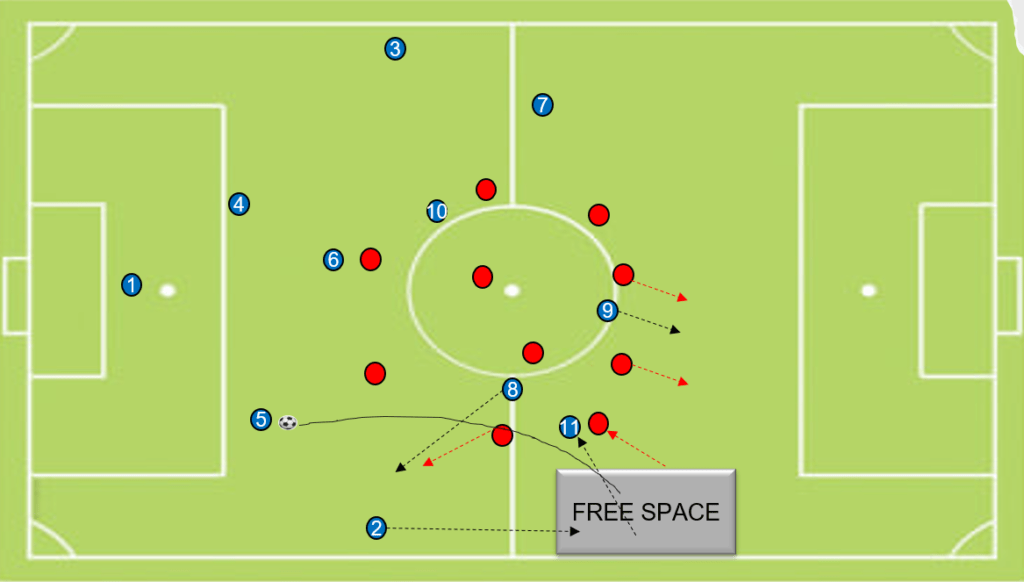
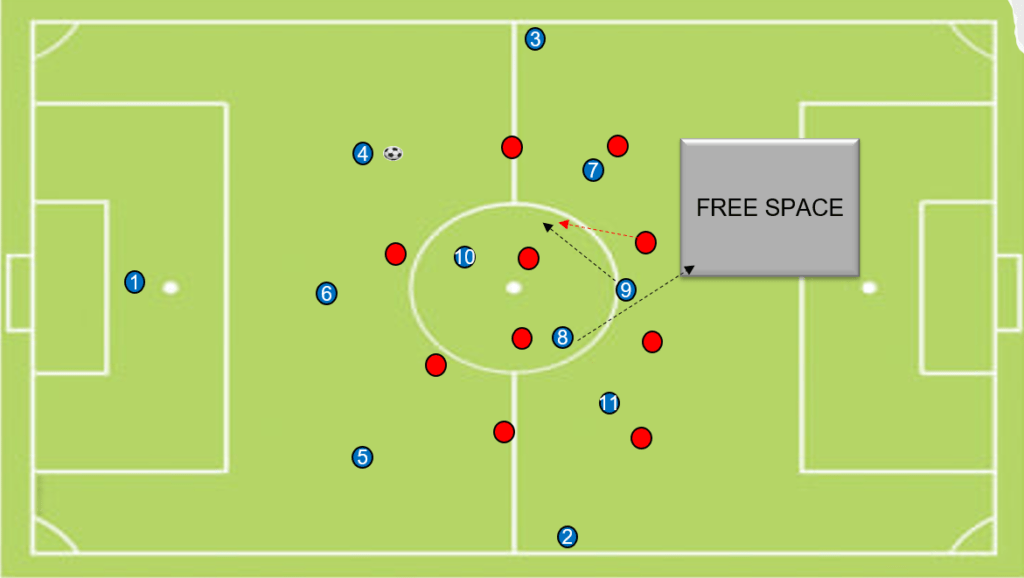
The move to playing attacking full backs requires the defense to be more involved in ball circulation than before. If the full backs do not move into advanced positions, the team loses an option further forward.
3. The general formation (as a reference point)
Throughout history has been a preference towards playing a variation of 4 – 3 – 3 or a 3 – 4 – 3 for reasons. These formations aim to create as many passing lines as possible to encourage ball circulation.
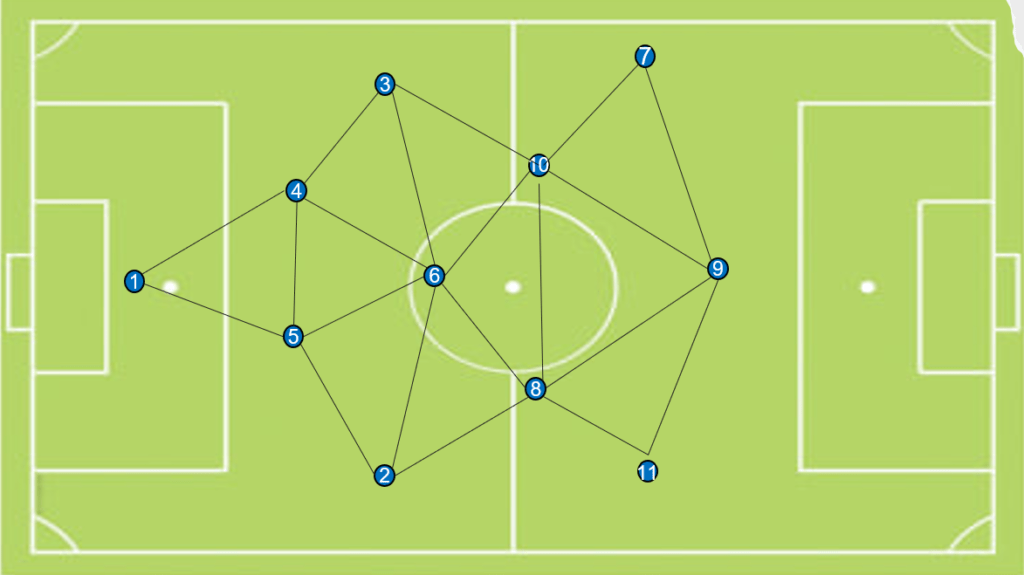
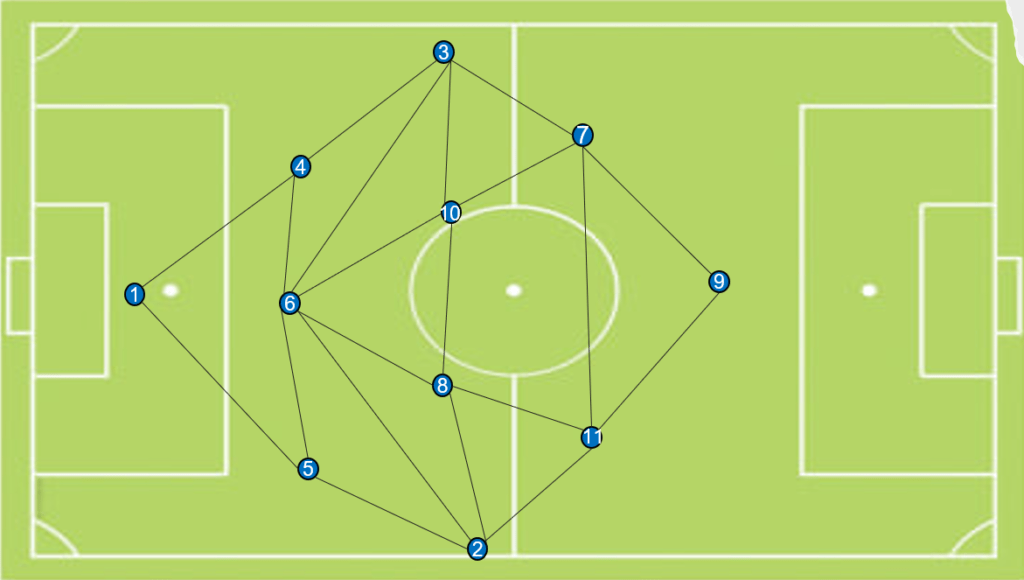
A 4 – 4 – 2 formation, a very popular structure, is used very often by Positional Play football teams during the Defensive phase and specifically in a defensive medium or low block. This is because the 4 – 4 – 2 offers a full coverage of the pitch (wide spaces including), 3 clear defensive lines, strong central axis with 6 players (2 CBs, 2 CMs, and 2CFs) which results in constant defensive balance.
The challenge when using a 4 – 4 – 2 in attack is to manage to create multiple passing options. The passing angles are not physically implemented thus the players must move a lot more to create triangles and rhombus, which is required for a short or medium passing style of play.
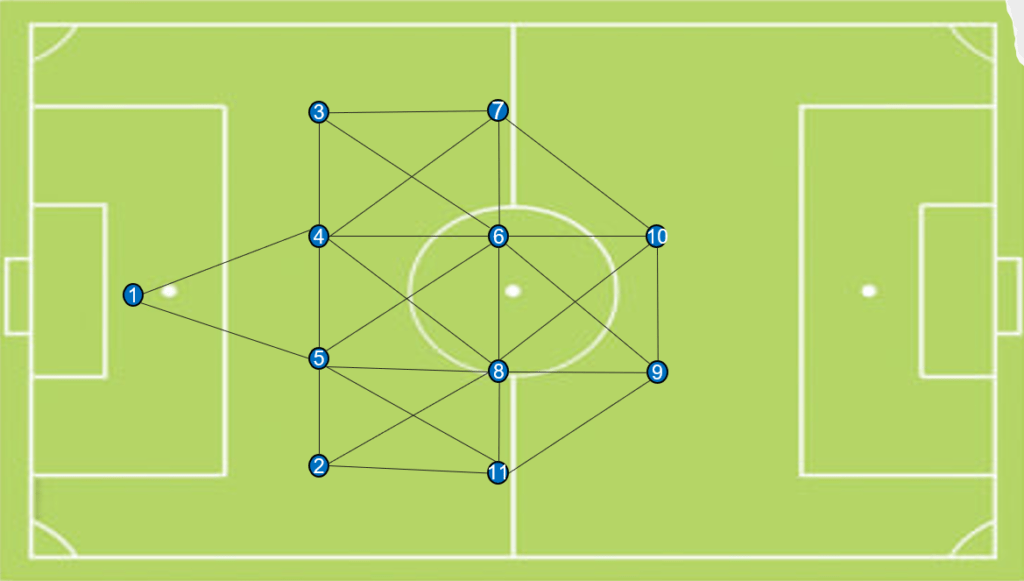
4. The symmetry or imbalance of basic tasks instructed to the players
Traditionally there has been a structured symmetry in pair-players roles of the team, however depending on the manager’s approach to build up speed and overarching approach, the basic tasks should be set to meet.
In some cases these have been set to match the key strengths of the playing squad instead of employing a strict system approach.
For example, a central defender due to his high technical skills may have instructions to constantly look to drive with the ball forward and create numerical superiorities in the center while the other defender due to his speed and great defensive cover awareness has as a main priority to just passing the ball and be always at the back to cover any loss of the ball.
Another example is the behavior of the 2 central midfielders in a 4 – 4 – 2 or 4 – 2 – 3 – 1 formation. The coaches usually prefer to have a more ball circulation-oriented midfielder and a more attacking-oriented one. The first one may have tactical instructions to drop at the back line or keep a deep position in order to help the ball circulation at the back. The other one will look for spaces higher up the pitch to receive passes between the lines.
5. Absolute approach to ball circulation
All the coaches who use Positional play football employed a shorter passing style. However, each coach’s interpretation changes the distances at which the average pass is made and indeed who can and cannot play longer direct balls, when these balls are allowed, and towards which spaces.
This, of course, is directly linked to the concept of opportunism. In the Positional Style of play, coaches and players must understand that ball possession is just a tool used to better organize the game and progress forward. In case, a long direct ball can create a clear chance to score a goal or a very good opportunity to find an advanced player with time and space to move forward then this pass is a “good pass”.
The intention is not to move the ball, rather to move the opposition
Pep Guardiola
I loathe all that passing for the sake of it, all that tiki-taka. It’s so much rubbish and has no purpose. You have to pass the ball with a clear intention, with the aim of making it into the opposition’s goal.
It’s not about passing for the sake of it.
Pep Guardiola
6. The attitudes to each of the 4 processes during the game
The 4 phases in football are:
- Attacking Organization
- The transition from Attack to Defense
- Defensive Organization
- The transition from Defense to Attack
Each coach can use different strategies and tactics for each phase. A coach can be very ‘defensive’ when out of possession, defending in a low compact block, and be very aggressive, and fast in counter attacks. Of course, the game is continuous and unified and each approach in each phase can affect how the team will behave in another phase.
For example, a team who defends in a very aggressive high pressing usually does not have much space to play behind the defensive line when they recover the ball. The transition will be mainly with individual actions (dribbling), shots outside the box, and passing the ball to wide players who cut inside and diagonally.
Conclusion
Positional Play football has so many parameters, variables, and theories and for that reason, only a few coaches in the world can implement it. It needs players with specific individual characteristics.
Of course, due to this complexity and flexibility, each coach can interpret and present a different approach based on his own mindset and experiences.
In another post, we are presenting the “non-variables” of the Positional Play football. These would be the aspects of the philosophy that cannot change.

